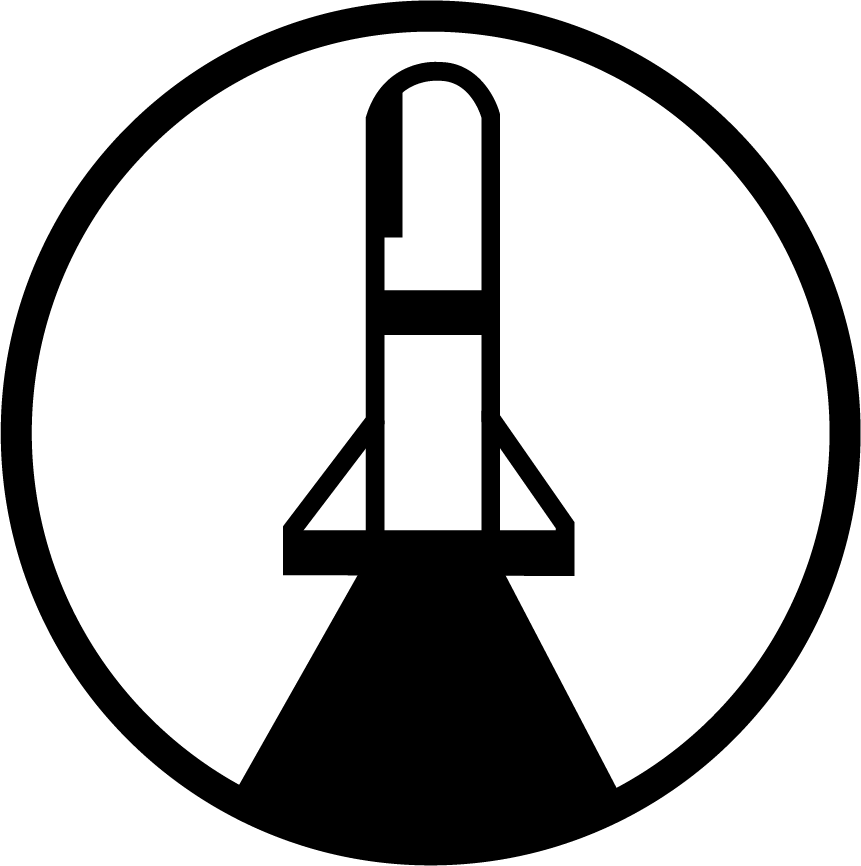-
RESEARCH PAPERS
-
Analysis of the Effect of Leading Edge Damage Caused by FOD on the Aerodynamic Performance of Aircraft Fan Blades
항공용 팬 블레이드에서 FOD로 인한 Leading Edge 손상이 공력 성능에 미치는 영향 분석
-
Guenhye Park, Kuisoon Kim, Sangjo Kim, Yuil Kim, Sooin Jeong
박근혜, 김귀순, 김상조, 김유일, 정수인
- This study investigated the changes in aerodynamic performance according to the size of the damaged area on the leading edge of the …
본 논문에서는 항공기용 터보팬 엔진의 팬 블레이드 앞전에 FOD로 인한 손상이 발생했을 경우 손상부의 크기에 따른 공력 성능 변화를 여러 회전 속도 …
- This study investigated the changes in aerodynamic performance according to the size of the damaged area on the leading edge of the fan blade of an aircraft turbofan engine under various rotational speed conditions. The analysis was performed numerically using the commercial program Ansys CFX 18.1. The results showed that aerodynamic performance degradation was observed in the damaged blade model due to FOD compared to the baseline model, accompanied by a decrease in mass flow rate, total power ratio, and isentropic efficiency. Furthermore, as the size of the damaged area increased, the total power ratio and efficiency decreased by a certain amount, and the degree of performance degradation varied depending on the rotational speed.
- COLLAPSE
본 논문에서는 항공기용 터보팬 엔진의 팬 블레이드 앞전에 FOD로 인한 손상이 발생했을 경우 손상부의 크기에 따른 공력 성능 변화를 여러 회전 속도 조건에서 확인하고자 하였다. 상용 프로그램인 Ansys CFX 18.1을 사용하여 수치적인 방법으로 성능해석을 수행하였다. 연구 결과, 결함이 없는 정상 모델보다 FOD에 의한 블레이드 손상부가 있는 모델에서 질량 유량, 전압력비, 등엔트로피 효율 모두 감소하는 공력 성능 저하가 관찰되었다. 손상부의 크기가 증가할수록 전압력비와 효율이 일정 폭으로 감소하였으며, 회전 속도에 따라 성능 감소 정도의 차이가 발생하였다.

-
Analysis of the Effect of Leading Edge Damage Caused by FOD on the Aerodynamic Performance of Aircraft Fan Blades
-
RESEARCH PAPERS
-
Test Results of High Altitude Test Facility with Steam Generators Connected in Parallel
병렬 연결 증기발생기가 있는 고도모의 장치 성능시험
-
Jungmin Lee, Kyungsu Park, Dongchan Ahn, Haeseung Jeong
이정민, 박경수, 안동찬, 정해승
- In the development of propulsion system for missiles and space launch vehicles, a variety of tests are performed to ensure that it …
미사일 및 우주발사체의 추진시스템 개발 시 운용고도에서 설계 요구조건을 만족하는지 확인하기 위해 다양한 방법을 활용한다. 가장 효율적인 방법은 지상 조건에서 고고도 환경 …
- In the development of propulsion system for missiles and space launch vehicles, a variety of tests are performed to ensure that it meets the design requirements. The most efficient method is to conduct high-altitude environmental simulation tests under ground conditions. In this study, the high-altitude simulation tests were performed on an ejector system with parallel-connected steam generator. Three parallel-connected steam generators generated steam about 5 kg/s, and the design points of the ejector and diffuser were verified. However, it was confirmed that various problems occurred when operating the parallel-connected steam generator using a single supply system and an integrated nozzle.
- COLLAPSE
미사일 및 우주발사체의 추진시스템 개발 시 운용고도에서 설계 요구조건을 만족하는지 확인하기 위해 다양한 방법을 활용한다. 가장 효율적인 방법은 지상 조건에서 고고도 환경 모의시험을 수행하는 것이다. 본 연구에서는 병렬 연결 증기발생기가 적용된 이젝터 시스템으로 고도모의시험을 수행하였다. 3기의 병렬 연결된 증기발생기는 5 kg/s 이상의 증기를 생성하였고, 이젝터 및 디퓨저의 설계점을 검증하였다. 다만, 단일 공급시스템과 통합 노즐을 사용하여 병렬 연결 증기발생기 운용 시 다양한 문제가 발생될 수 있음을 확인하였다.
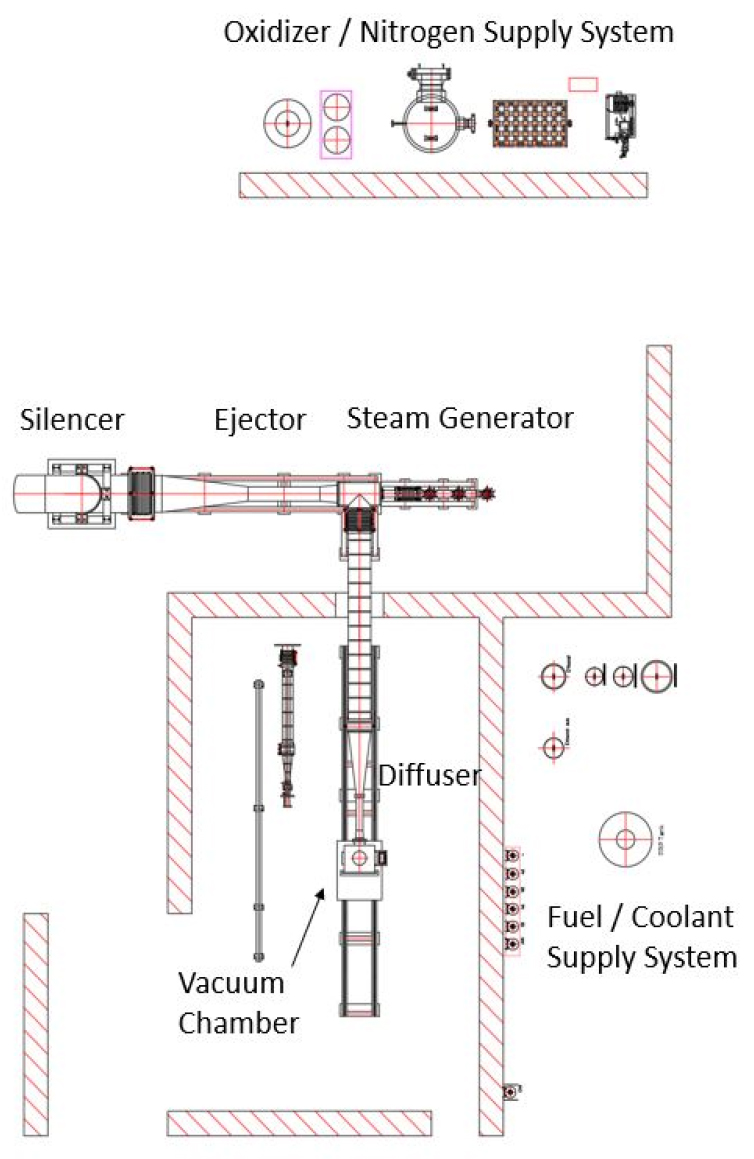
-
Test Results of High Altitude Test Facility with Steam Generators Connected in Parallel
-
RESEARCH PAPERS
-
Experimental Study on Flame Behavior and NOx Emission in Counter-Swirl Injector for Gas-turbine Engine
가스터빈용 역선회 인젝터에서 화염거동 및 NOx 배출특성에 관한 실험적 연구
-
Junpyo Hong, Keeman Lee
홍준표, 이기만
- A study was conducted on flame behavior and NOx emission characteristics in co-axial counter-swirl injector for gas turbine engine under various …
동축 역선회 인젝터에서 다양한 내부 선회강도와 Quarl 각도에 따른 화염거동과 NOx 배출특성에 관한 연구가 수행되었다. 총 열 발생률이 5 kW로 고정된 …
- A study was conducted on flame behavior and NOx emission characteristics in co-axial counter-swirl injector for gas turbine engine under various inner swirl levels and quarl angles. The study was carried out with a fixed total heat release rate of 5 kW, using global equivalence ratio, hydrogen co-firing ratio, quarl angle, and inner swirl number as key parameters. Five distinct flame shapes were identified based on the global equivalence ratio and hydrogen co-firing ratio. It was observed that the inner swirl number and quarl angle influence the mixing performance between the premixed methane-oxidizer flow through the outer nozzle and the hydrogen flow from the inner nozzle, as well as the recirculation zone, leading to variations in flame behavior and NOx emissions.
- COLLAPSE
동축 역선회 인젝터에서 다양한 내부 선회강도와 Quarl 각도에 따른 화염거동과 NOx 배출특성에 관한 연구가 수행되었다. 총 열 발생률이 5 kW로 고정된 상태에서 글로벌 당량비, 수소 혼소율, Quarl 각도와 내부 선회수를 주요 변수로 연구를 진행하였다. 글로벌 당량비와 수소 혼소율에 따라 5가지 화염형상이 나타나는 것을 확인하였으며, 내부 선회수와 Quarl 각도는 재순환 영역뿐만 아니라 외부 노즐의 예혼합된 메탄연료와 산화제(공기) 유동과 내부 노즐의 수소연료 유동 간의 혼합성능에 영향을 미쳐 화염거동과 NOx 배출에 변화를 가져왔다.
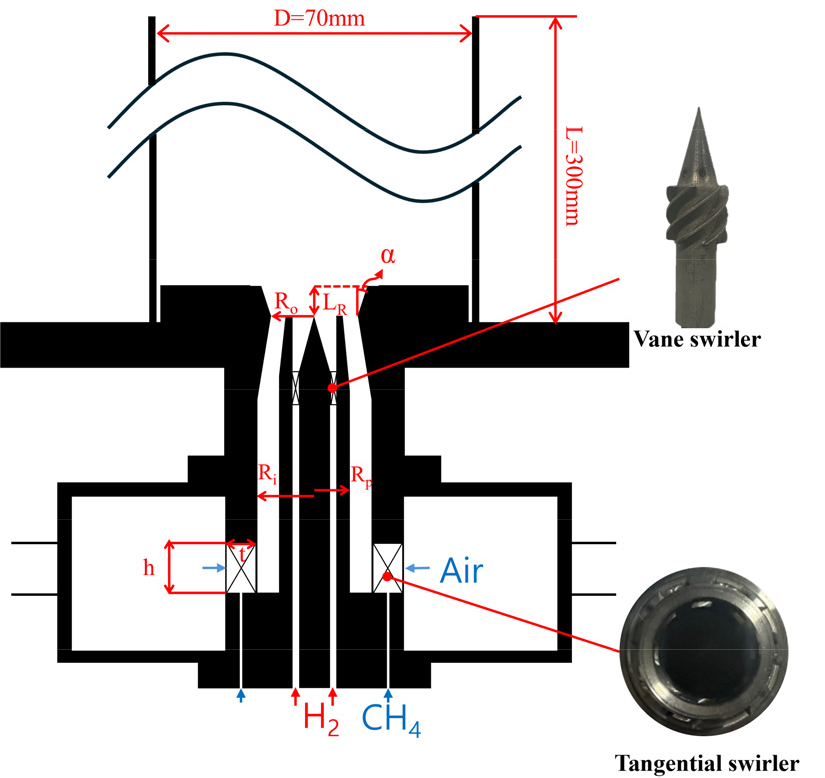
-
Experimental Study on Flame Behavior and NOx Emission in Counter-Swirl Injector for Gas-turbine Engine
-
RESEARCH PAPERS
-
Radial Slot Application Method for Strain Relief of Solid Rocket Motor
고체 추진제의 변형률 완화를 위한 래디얼 슬롯 적용 방안
-
Byungjun Lee
이병준
- In this paper, we studied the application of a radial slot to the propulsion engine to relieve the strain of solid propellant …
본 논문에서는 래디얼 슬롯의 형상과 위치에 최적설계 개념을 적용하여 고체 추진제의 변형률 완화를 위한 래디얼 슬롯의 추진기관 적용 방안에 관해 연구하였다. 연구 …
- In this paper, we studied the application of a radial slot to the propulsion engine to relieve the strain of solid propellant by applying the optimal design concept to the shape and location of the radial slot. The propulsion engine under study was set to be a high-ratio, high-charge propulsion engine that requires the application of radial slots due to its high overall strain. The optimization was performed in conjunction with ABAQUS’s 3D structural analysis based on codes written in MATLAB.
- COLLAPSE
본 논문에서는 래디얼 슬롯의 형상과 위치에 최적설계 개념을 적용하여 고체 추진제의 변형률 완화를 위한 래디얼 슬롯의 추진기관 적용 방안에 관해 연구하였다. 연구 대상 추진기관은 전체적인 변형률이 높아 래디얼 슬롯 적용 필요성이 높은 고세장비, 고충전 추진기관으로 설정하였다. 최적설계는 MATLAB으로 작성된 코드를 기반으로 ABAQUS의 3차원 구조해석과 연동하여 수행되었다.

-
Radial Slot Application Method for Strain Relief of Solid Rocket Motor
-
RESEARCH PAPERS
-
Measurement of Solid Propellant Burning Rate using Stojan Vessel
Stojan vessel을 이용한 고체 추진제 연소속도 측정 연구
-
Hong-Min Shim, Sung June Kim, Byoung Sun Min, Sung Min Myung
심홍민, 김성준, 민병선, 명성민
- The strand burner is a device commonly used to measure the burning rate of solid propellants, offering a simple measurement principle and …
스트랜드 버너는 고체 추진제의 연소속도를 측정하기 위한 장치로 측정 원리가 단순하고 연소속도 계산이 쉽지만, 복기 추진제처럼 압력에 따른 복잡한 연소 거동을 보이는 …
- The strand burner is a device commonly used to measure the burning rate of solid propellants, offering a simple measurement principle and easy calculation of burning rates. However, for propellants such as double- base propellants that exhibit complex burning behavior depending on pressure, numerous tests are required. In this work, a Stojan vessel capable of obtaining the pressure-dependent burning rates of solid propellants in a single test was used to measure and analyze the burning rates of three types of propellants. For HTPB-based solid propellants, the burning rates obtained from the Stojan-vessel were slower than those measured with the strand burner, though the difference decreased as the pressure increased. In contrast, for NEPE-based solid propellants, the difference in burning rate was smaller at low pressures but relatively larger at high pressures. The pressure exponent calculated using the Stojan vessel was higher than that obtained with the strand burner.
- COLLAPSE
스트랜드 버너는 고체 추진제의 연소속도를 측정하기 위한 장치로 측정 원리가 단순하고 연소속도 계산이 쉽지만, 복기 추진제처럼 압력에 따른 복잡한 연소 거동을 보이는 추진제에 대해서는 많은 횟수의 시험이 필요하다. 본 연구에서는 한 번의 시험만으로도 압력에 따른 고체 추진제의 연소속도를 획득할 수 있는 스토얀 베슬을 사용하여 3종의 추진제에 대해 연소속도 측정 및 분석을 수행하였다. 그 결과 HTPB계 고체 추진제의 경우 스토얀 베슬로 계산된 연소속도가 스트랜드 버너로 구한 것보다 느렸으며 압력이 증가할수록 그 차이는 감소하였다. 반면 NEPE계 추진제의 경우 연소속도 차이는 저압에서 작았지만, 고압으로 갈수록 상대적으로 커졌다. 스토얀 베슬로 계산한 압력지수는 스트랜드 버너로 구한 것보다 큰 값을 가졌다.
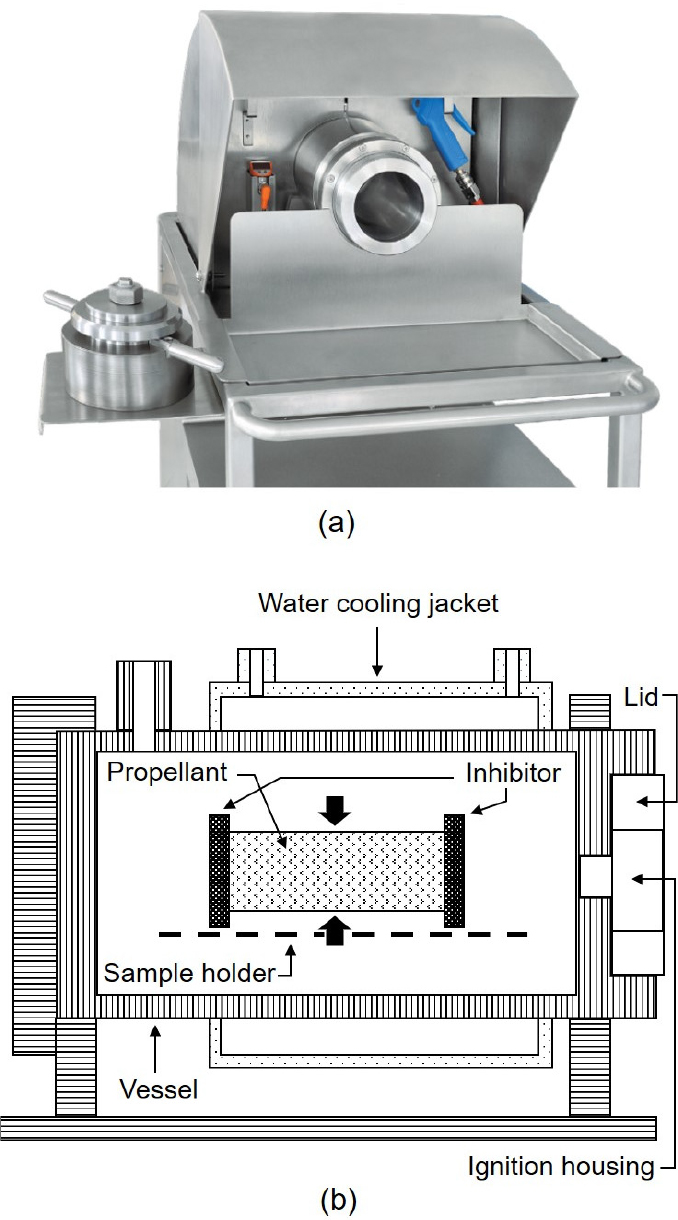
-
Measurement of Solid Propellant Burning Rate using Stojan Vessel
-
TECHNICAL PAPERS
-
Economic Analysis of NewSpace Small Launch Vehicles and Small Reusable Launch Vehicles
뉴스페이스 소형발사체와 소형 재사용발사체의 경제성 분석
-
Keum-Oh Lee, Daeban Seo, Hyeonjun Kim, Byoungjik Lim
이금오, 서대반, 김현준, 임병직
- In this study, we analyzed the structure of the NewSpace small launch vehicles, SpaceX's Falcon 1, Rocket Lab’s Electron, Firefly Aerospace's Alpha, …
본 연구에서는 뉴스페이스 소형발사체인 SpaceX의 Falcon 1, Rocket Lab의 Electron, Firefly Aerospace의 Alpha, 그리고 Relativity Space의 Terran 1 발사체들의 구조를 분석하였으며, 소형발사체의 …
- In this study, we analyzed the structure of the NewSpace small launch vehicles, SpaceX's Falcon 1, Rocket Lab’s Electron, Firefly Aerospace's Alpha, and Relativity Space's Terran 1, and identified the weight and mass ratio of each stage of the small launch vehicles. In addition, through the structure analysis of the Falcon 9, we were able to identify the additional weight of the grid fins and landing legs for first stage reuse, and calculated the additional weight when reusing other small launch vehicles. Based on the previously analyzed reusable launch vehicle with 35-tonf methane staged-combustion cycle engines, the mission of the Korean small reusable launch vehicle was analyzed, and the economic feasibility of the Falcon 9 small reusable launch vehicle was analyzed.
- COLLAPSE
본 연구에서는 뉴스페이스 소형발사체인 SpaceX의 Falcon 1, Rocket Lab의 Electron, Firefly Aerospace의 Alpha, 그리고 Relativity Space의 Terran 1 발사체들의 구조를 분석하였으며, 소형발사체의 단 별 중량과 구조비를 파악할 수 있었다. 또한 Falcon 9의 구조 분석을 통하여 1단 재사용을 위한 그리드핀, 착륙 다리 등 추가적인 중량을 파악할 수 있었으며, 다른 소형발사체를 재사용화 하였을 때의 추가되는 중량을 계산하였다. 기존에 분석된 35톤급 메탄 다단연소 사이클 엔진을 사용한 재사용 발사체를 바탕으로 한국형 소형 재사용 발사체들의 임무에 대해 분석하였으며, 이 결과를 통하여 Falcon 9형 소형 재사용 발사체의 경제성을 분석하였다.
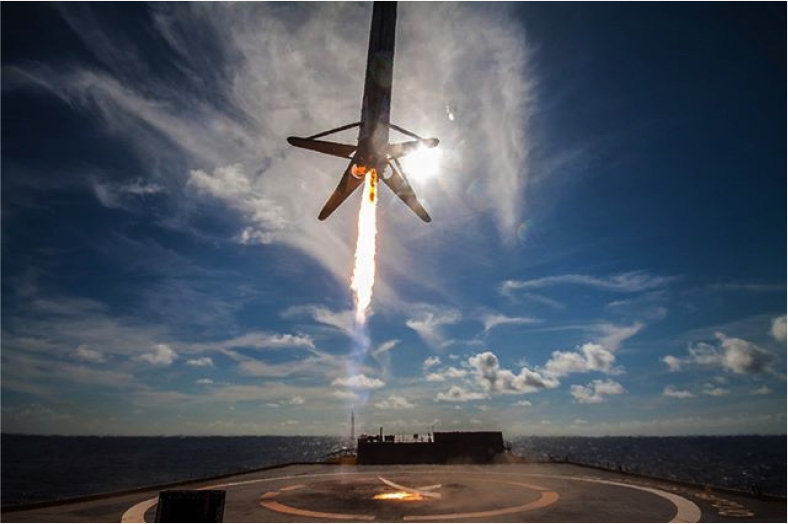
-
Economic Analysis of NewSpace Small Launch Vehicles and Small Reusable Launch Vehicles
-
TECHNICAL PAPERS
-
Introduction of High Pressure Combustion Test Facility for Gas Turbine Engine Combustor in Korea Aerospace Research Institute
한국항공우주연구원 터보샤프트 가스발생기 고온부품 고압 실환경 성능 시험평가 설비 소개
-
Jaiho Kim, Myeung Hwan Choi, Hyeontaek Jo, Hyungmo Kim, Dong-ho Rhee, Jaehwan Kim
김재호, 최명환, 조현택, 김형모, 이동호, 김재환
- The Korea Aerospace Research Institute (KARI) has established a high-pressure gas turbine combustor test facility to conduct research on advanced turboshaft engine …
본 논문은 최근 한국항공우주연구원에서 구축한 가스터빈 고온 부품 연소기 실환경 성능 시험평가 설비를 전반적으로 소개하는 논문이다. 본 시험설비는 1,000마력급 터보샤프트 엔진용 가스발생기 …
- The Korea Aerospace Research Institute (KARI) has established a high-pressure gas turbine combustor test facility to conduct research on advanced turboshaft engine using a gas generator. The test facility has been designed to provide an experimental environment that simulates actual operating conditions of the gas generator. This facility consists of an air supply system, a heating system, a test rig section, a fuel supply system, a cooling air supply system, and a cooling water supply system. The facility can operate at pressures up to 40 bara and temperatures up to 650°C. The combustion test data obtained from this test facility is expected to play a crucial role in the development of next-generation gas turbines engine combustor and contribute significantly to advancements in domestic gas turbine engine technology.
- COLLAPSE
본 논문은 최근 한국항공우주연구원에서 구축한 가스터빈 고온 부품 연소기 실환경 성능 시험평가 설비를 전반적으로 소개하는 논문이다. 본 시험설비는 1,000마력급 터보샤프트 엔진용 가스발생기 고온부인 연소기와 터빈 구성품에 대한 실환경 성능 평가하기 위해 구축하였다. 또한, 이 설비를 활용하여 최근 전 세계적으로 친환경·고성능 가스터빈 개발 수요 증가 따른 고성능·고효율 연소기에 대한 연구개발에도 활용될 예정이다. 본 시험설비는 공기 공급부, 공기 가열부, 시험리그 장착부, 냉각공기 공급부, 냉각수 공급부, 연료 공급부, 제어 및 계측부로 구성되어 있으며, 최대 압력 40 bara, 최대 온도 650°C까지 운용할 수 있다. 이를 통해 고성능 연소기 개발을 수행하고, 앞으로 수행될 국산 고성능 가스터빈 엔진 개발에 필요한 핵심 데이터를 제공할 예정이다.
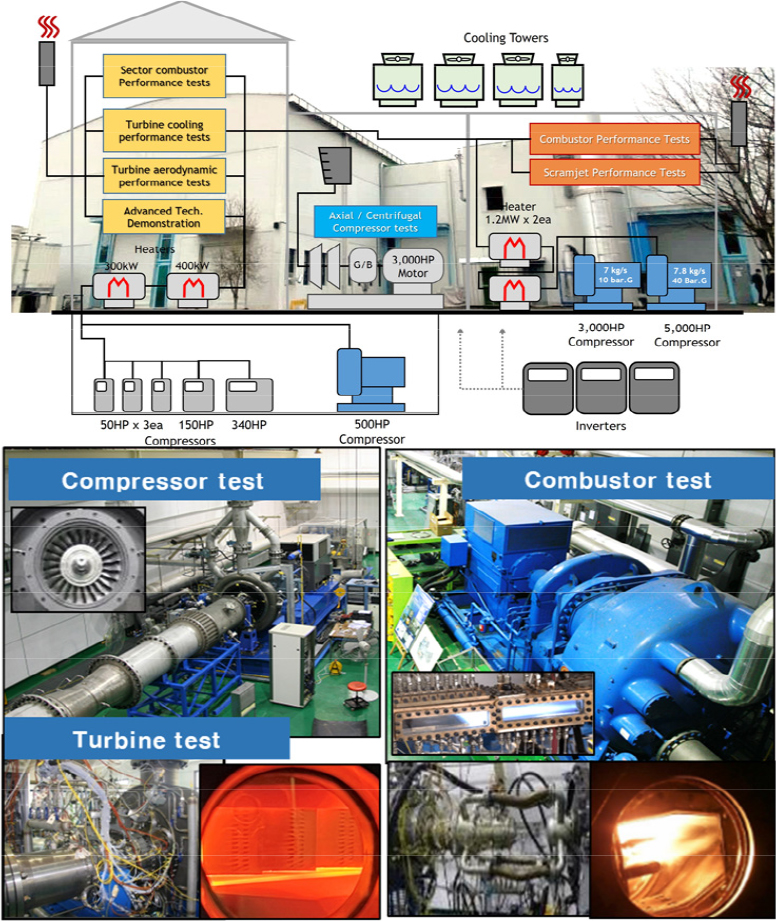
-
Introduction of High Pressure Combustion Test Facility for Gas Turbine Engine Combustor in Korea Aerospace Research Institute
Journal Informaiton
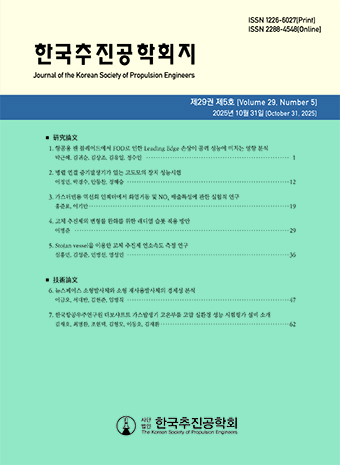 Journal of the Korean Society of Propulsion Engineers
Journal of the Korean Society of Propulsion Engineers
Journal Informaiton
Journal Informaiton - close
 Journal of the Korean Society of Propulsion Engineers
Journal of the Korean Society of Propulsion Engineers












